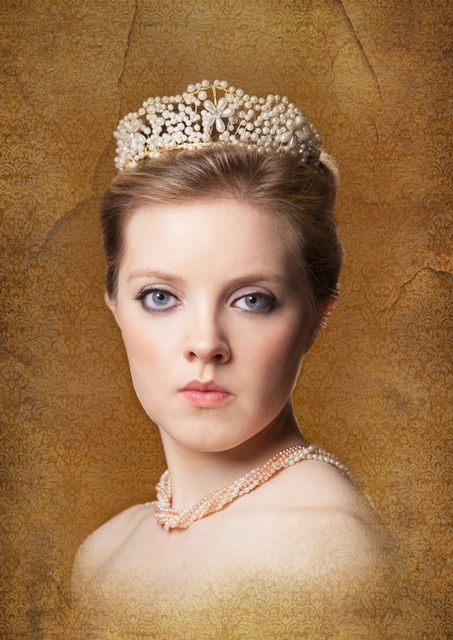The Theatre of Royalty
15 November 2014, 7.30pm Durham Cathedral

With guest performers
Rowan Pierce (soprano)
Robert Farley (trumpet)
Durham County Youth Choir
Durham Singers Ensemble on period instruments
(leader Caroline Balding)
Programme
Introduction: Handel – Zadok the Priest
Coronation of James II
Purcell: Thou knowest, Lord
Purcell: My Heart is inditing
Purcell: Music from Act V of King Arthur:
Trumpet tunes
“Fairest Isle”
“Saint George”
“Our natives not alone appear”
Blow: God spake sometime in visions.
Coronation of George II – Music by Handel
Coronation Anthem: The King Shall Rejoice”The Arrival Of The Queen Of Sheba” – Solomon
“Endless Pleasure, Endless Love” – Semele
Coronation Anthem: My Heart is inditing
“Will The Sun Forget To Streak” – Solomon
Finale:
“Let The Bright Seraphim” &
“Let Their Celestial Concerts All Unite” – Samson
The Durham Singers Ensemble
| Durham County Youth ChoirDirector: Hilary Ions Soprano: Josie Ambler, Hannah Beard, Juliet Hague, Pippa Hobbs, Beth Johnson, Freya Kalus, Helen McGlade, Emma Neil, Kate Osbiston, Bethany Pearson, Rachel Pearson, Lizzie Sensier, Shelby Stephenson, Maisie Swindells, Susanna Ward, Georgia Webb, Sophie Wilson. Alto: Sarah Bradley, Tiana Dinard-Samuel, Katie Gledhill, Evelyn Greeves, Beth Grimes, Jane Hayman, Rachel Lawrence, Alex Meakin, Ellen Poot, Bessie Yuill. Tenor: Niall Bennison, James Draper, Adam Gatenby, Marlon and Michael Lorenzo, Ben Wilson. Bass: Simon Biasi, Marcus Dixon, Robert Dodds, Daniel Halliday, Adam Gatenby, Adam Kelly, Hugh Morris, Chris Winkless-Clark. |
Programme Note – The Theatre of Royalty
Music for Kings and Queens, from the English Baroque
Westminster Abbey and what we now think of as the West End of London were two great centres for music-making in the English baroque – from roughly the late 1600s to the late 1700s. Between them was a movable institution itself, the Chapel Royal. This institution included a choir of gentlemen who, at various points in its history, led much of the royal and metropolitan musical life. This was especially true in the time of Purcell. Also involved in the Chapel was a band of violins inspired by the violins at Versailles (which English royal exiles would have heard during the 1650s). And when the merry monarch Charles II died and his Roman Catholic brother James II ascended the throne, the coronation was capped by music of huge splendour led by the now impressive team of singers and players who had come to maturity under Charles’s patronage.
All coronations at Westminster Abbey are moments of theatre as well as moments of sacrament and liturgy, and from the spacious grand opening of Blow’s ‘God spake sometime in visions’ to the light dance rhythms in Purcell’s answering ‘My heart is inditing’, the great occasion in the Abbey in 1685 was marked by music that was both theatrical and solemn in its conception.
Neither Purcell nor Handel could rely on liturgical or royal choirs to earn their living as composers. Purcell moved into the theatre world, not least because of the changes in the royal household under James II. His semi-opera King Arthur was designed to provide ‘music for the eye and the ear’, entertaining rather than edifying. But the theme was ‘British’ enough.
The two songs performed tonight come near the end of the opera, sung by characters of secondary importance – Venus and a character representing ‘Honour’. Music for the eye and the ear was also important for the funeral of Queen Mary in 1695, who was much honoured by the musicians of Purcell’s day. In ‘Thou knowest Lord’ we are reminded that Purcell also wrote music for the soul.
Handel was naturalized as a British citizen in the year of George II’s coronation, 1727 and his four Coronation Anthems were commissioned specially for the occasion, from a man whose style had already touched high-ranking hearts (through his ‘Ode for the birthday of Queen Anne’ for example). Ironically, while we think of anthems like ‘The King shall rejoice’ as high points in the long tradition of English sacred music, their first performance was presumably not as accomplished as the music in 1685. Controlling the lively allegro speeds of ‘The King shall rejoice’ in the galleries and performing areas of the royal theatre of Westminster Abbey was difficult and the performers not over-rehearsed!
In later years, Handel developed at Covent Garden a style of music-making that could weave together the colour and virtuosity of the opera with edifying, sacred texts. This was especially important in Lent, when musical entertainment in London continued, but with a more solemn feel. Solomon, Samson and others were designed for performance in the theatre, by theatre musicians, but with the spirit of the Abbey not far away. Semele was emphatically secular, and audiences were not fooled by an ‘oratorio’ – performed during Lent! – all about Jupiter’s love life. In Solomon, however, the moral insight of the ruler is emphasized throughout, even if (reflected in the Queen of Sheba’s aria, ‘Will the sun forget to streak’) one might imagine a romantic connection.
Handel found something of an ‘English style’ in 1727 that propelled him throughout the rest of his career. Perhaps this was to do with the exciting layering up of woodwind, timpani and trumpets to achieve dramatic effects; or his ability to sew dance rhythms into solemn music. From music as virtuosic as the coloratura ‘Let the bright seraphim’ to the flowing semiquavers that introduce ‘Zadok the Priest’, this quest for a balance between colour and solemnity, royal pageant and moral edification, theatre and church, was at the heart of the English baroque.
Julian Wright
November 2015
